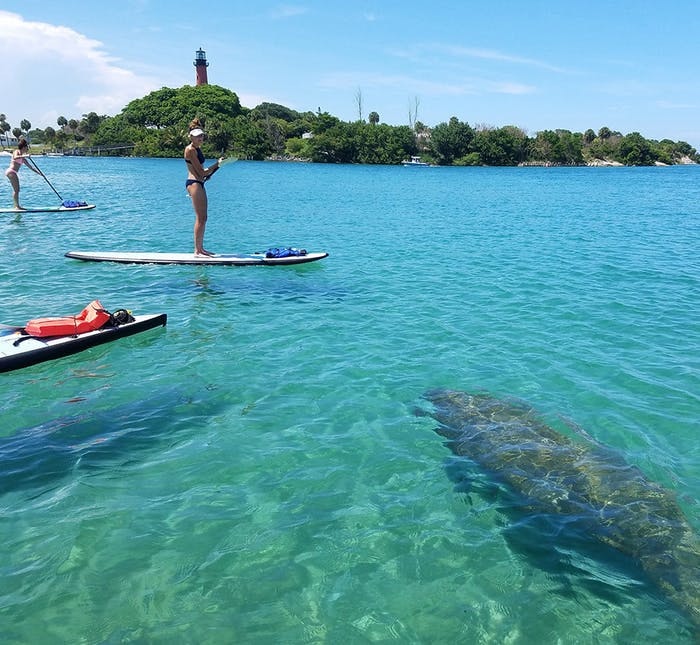Navigational Aids
The Jupiter Inlet District was created to maintain a navigable channel in the Loxahatchee River and the inlet, providing public access to these important waterways leading to the Atlantic Ocean.
Central to our mission the Jupiter Inlet District installed and maintains channel markers in the Central Embayment, North, Northwest and Southwest forks of the Loxahatchee River and the Jupiter Inlet in the interest of public safety in navigation. Quarterly inspections of all channel markers and navigational aids are conducted by the District. To report any missing or downed channel markers, please call (561) 746-2223.
Download a map of channel markers in the Central Embayment and the Boater's Guide below.
Jupiter Inlet District Channel Markers MapJupiter Inlet District Boater's Guide
Speed Zones for Boating Safety and Manatee Protection
Area waterways are divided into several speed regulation zones in order to increase boating safety and to minimize manatee injuries resulting from encounters with moving vessels. The Florida Fish and Wildlife Conservation Commission sets and enforces speed zones. Signs visible on the water mark the transitions between zones. To show all the zones at a glance, this map displays the different zones in varying colors.
Note that speed regulations for the lower Loxahatchee River change twice each year to reflect seasonal variation in manatee presence. From November 15 to March 31, Slow Speed, Minimum Wake (channel exempt) applies throughout the entire area outlined in solid red. For the remainder of the year, the rule is Slow Speed, Minimum Wake within 300 feet of shore (dashed red line). A turning "page" panel allows each advisory sign to display the correct seasonal message.

Tips to Help Protect Manatees

West Indian manatees are large, gray aquatic mammals. An adult manatee may be almost 10 feet long and weigh 800-1200 pounds. Manatees live in rivers, estuaries, saltwater bays, and canals, and have no natural enemies. However, many deaths result from collisions with watercraft. Manatees are protected under federal and Florida state law. It is unlawful to feed, touch, or disturb any manatee. State penalties are a maximum fine of $500 and/or imprisonment for up to 60 days. A federal penalty may be $100,000 and/or one year in prison.
To help protect these gentle giants, there are simple things we can all do:
- Be alert while boating and always obey posted speed zone waterway signs.
- Manatees can be hard to spot. Keep a look out for signs of manatees, like a snout breaking the water or a swirl or flat spot in the water caused by a swimming manatee's tail.
- Always wear polarized sunglasses to reduce glare and allow better through-water visibility.
- Slow down. Reducing boat speed gives boaters a better chance to see manatees and avoid them, and gives manatees time to get out of the boat's path.
- Obey posted manatee caution zone signs and avoid manatee sanctuaries.
- Stay in deep water channels as much as possible.
- Remain at least 50 feet away from manatees and stop your prop if you must go closer.
- Stow and properly dispose of your trash. Debris such as discarded plastic bags or six-pack holders is dangerous to manatees and other wildlife. Properly discard or recycle monofilament line and fishhooks.
- Do not feed manatees. It is against the law. Feeding, providing water or touching manatees may encourage them to approach people who might harm them.


